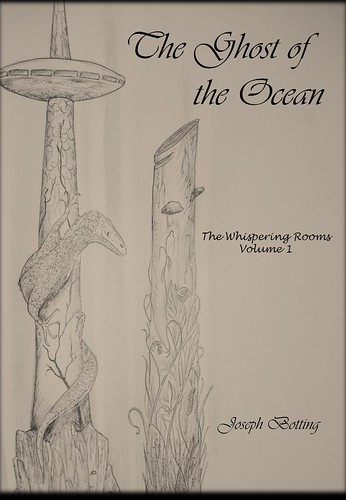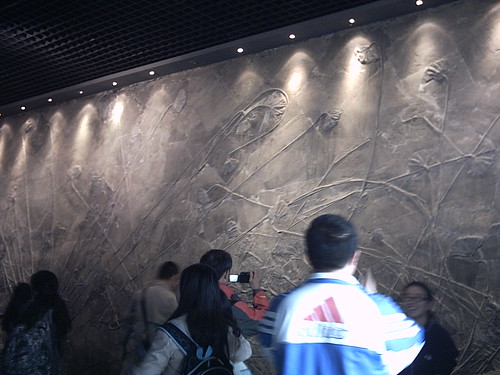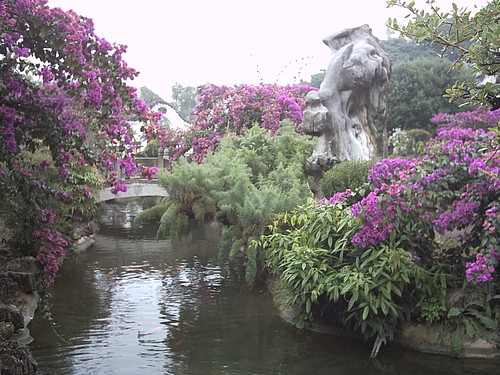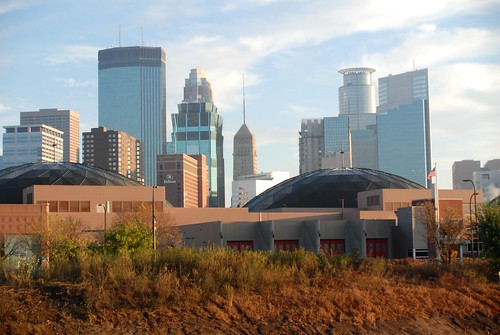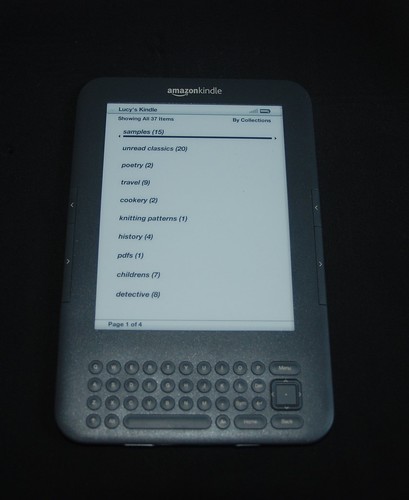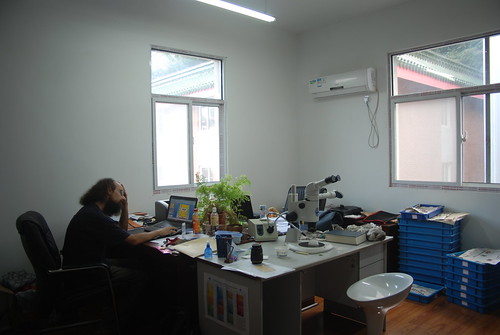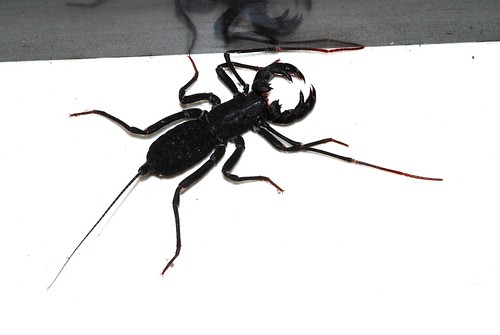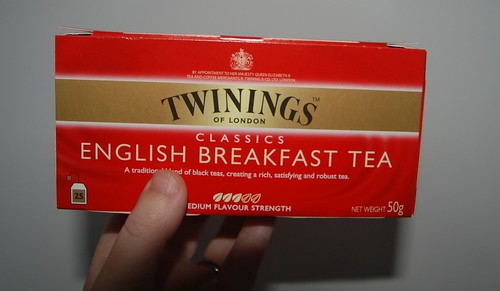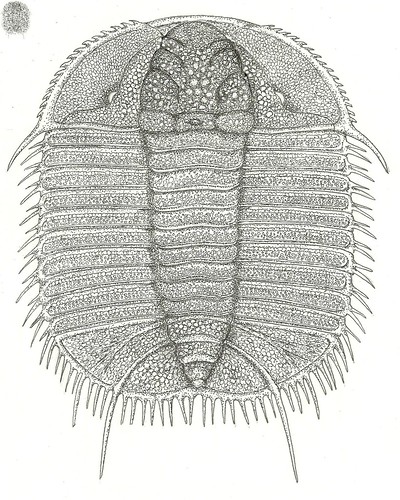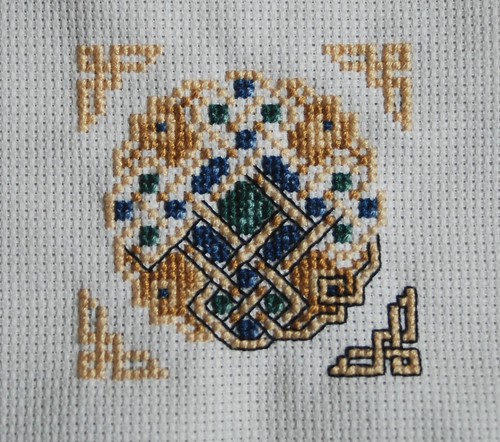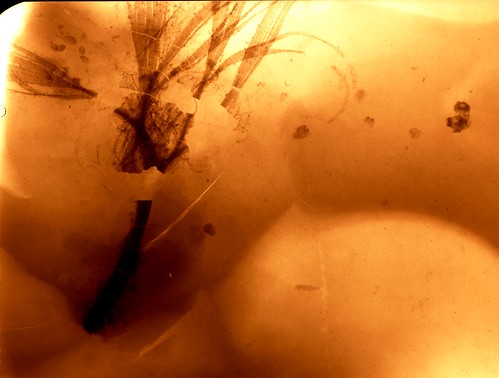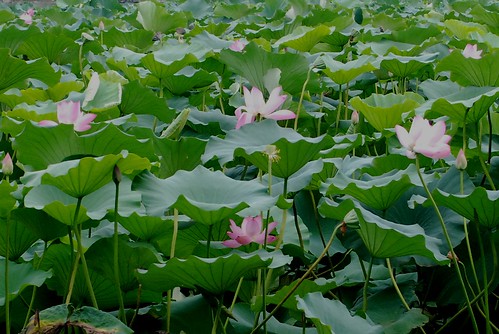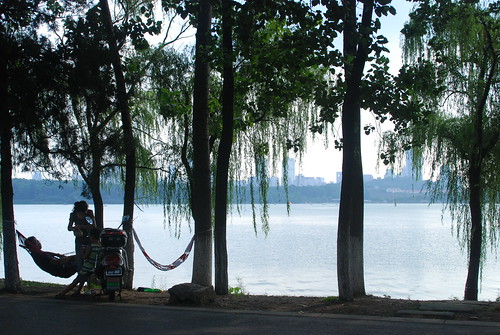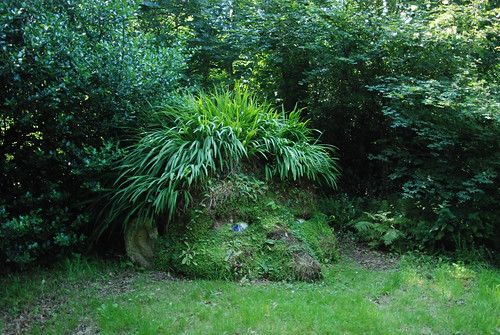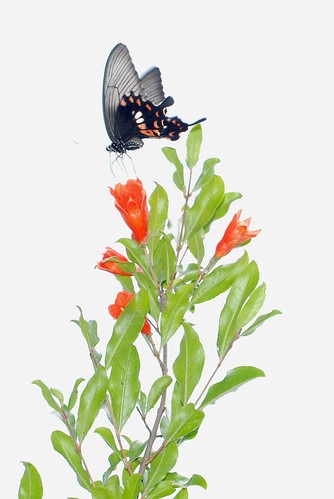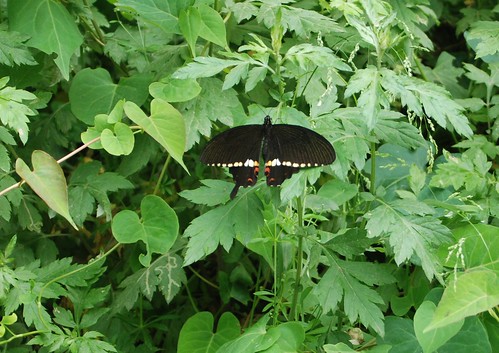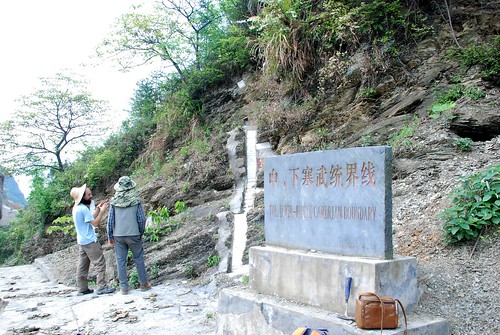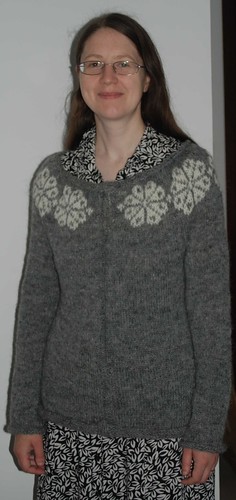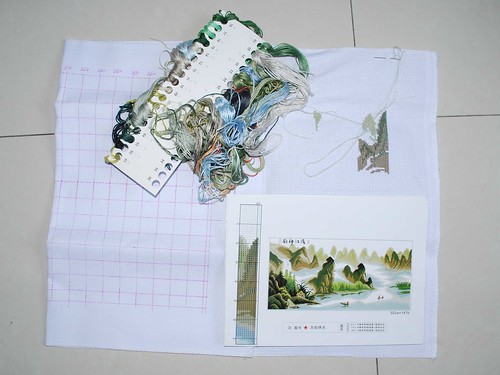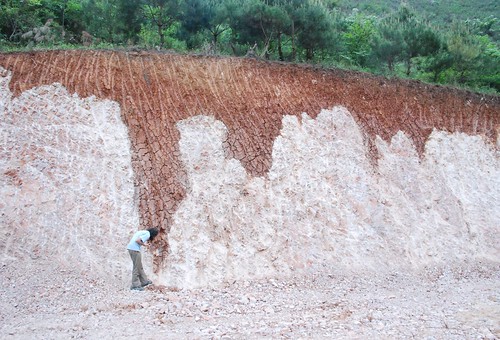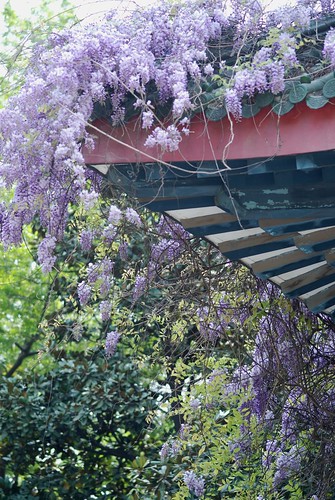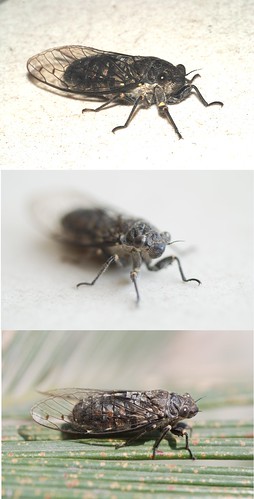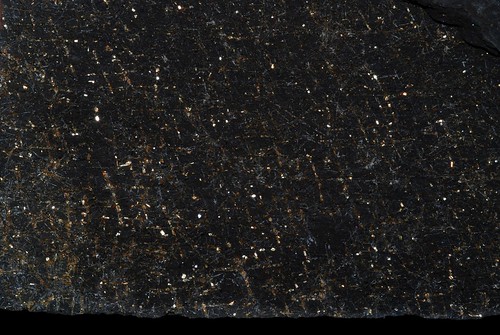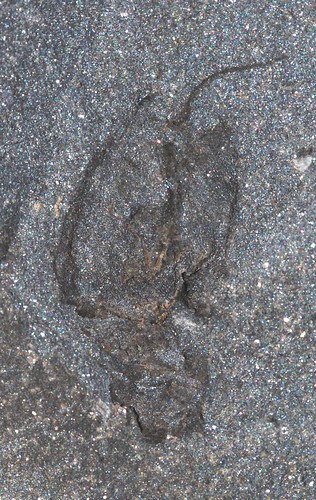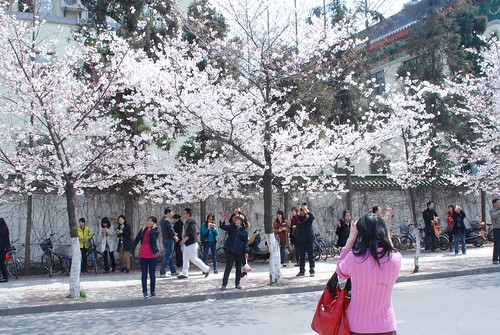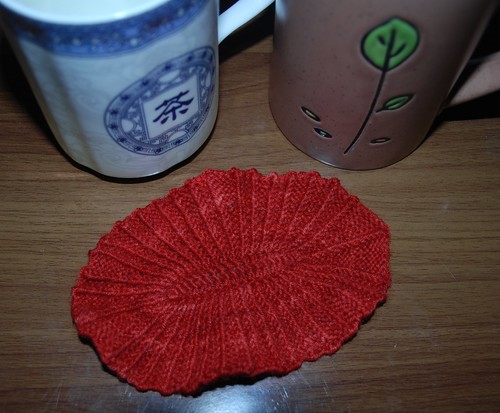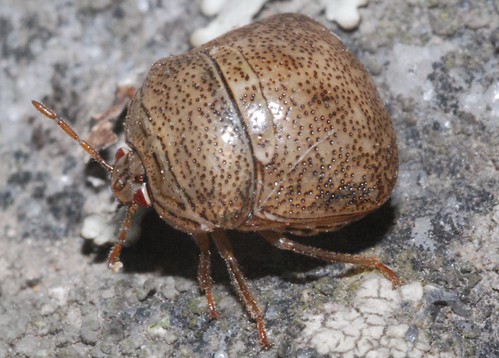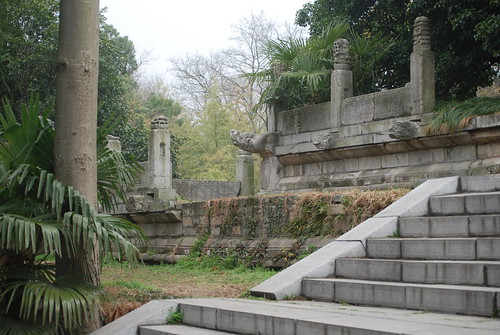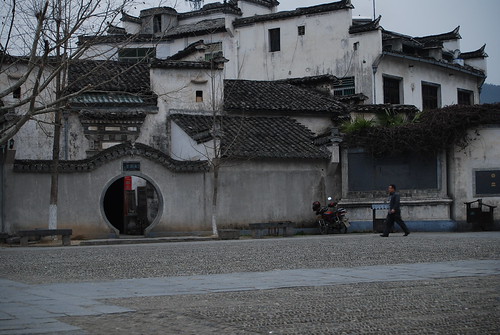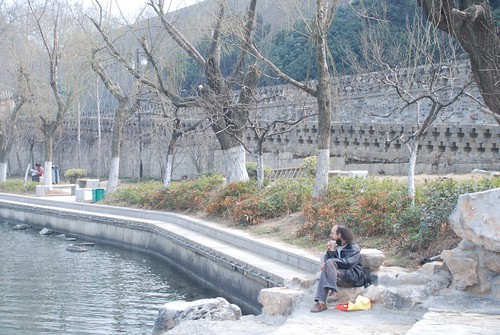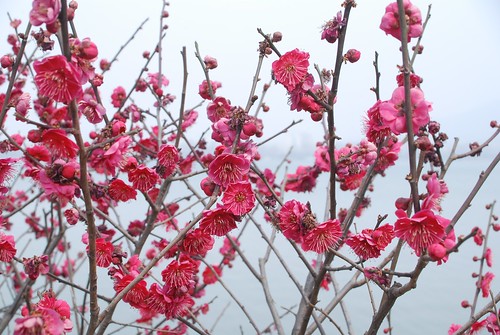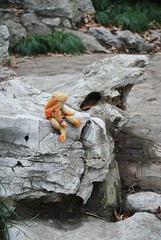From the sublime to... well, you get the idea. Some of you know I've been trying (and often failing) to write a series of fantasy books over the past few (well, fifteen) years. Thanks to the wonders of Kindle, I've finally gone and published the thing. You know how people always say how hard it is to get something into print? Well, it's true - unless that's just because mine's awful, of course...
Anyway, it's with a strange sense of trepidation that I can say that 'The Ghost of the Ocean', being the first part of 'The Whispering Rooms', is now available for the purpose of immediate boredom-relief* to anyone with a kindle (or kindle app on their computer, of course). It's only available through Amazon at the moment:
http://www.amazon.co.uk/Ghost-Ocean-Whispering-Rooms-ebook/dp/B006KRI97I/ref=sr_1_3?ie=UTF8&qid=1323668895&sr=8-3
Apologies for the interruption to your scheduled fossils, knitting and random burblings about China. Normal service will be resumed shortly.
*No guarantees, mind. For those unaffected by the alleged boredom-relieving properties, I propose to advertise it as an over-the-counter soporific instead.
Sunday 11 December 2011
And now for something completely different...
Saturday 10 December 2011
Burgess Shale sponges
Dear all,
Apologies for the recent silence… we’ve been trying to finish off all sorts of things before the end of the year, and are flying back to the UK tomorrow for a “holiday”. This actually means going to a conference and a couple of museum visits as well, plus I’ve just been told I’ve got a couple of reports to write up and an hour-long presentation to do as soon as I get back, but we’re still looking forward to a decent break. You never know, we might even manage a blog post or two…
This one I wanted to write as a belated little something about the Burgess Shale. I spent three weeks working in Toronto, so perhaps you’re curious why..? Or perhaps not – but I’m telling you anyway. The reason is, the Burgess Shale contains some of the most astounding fossils to be found anywhere in the world. From the point of view of sponges, they probably are the best anywhere. The fossils come from a series of spectacular locations high in the Rockies in British Columbia. I’ve not been there yet, but I’ve now been invited to join in their fieldwork when I get a chance, which is a deeply exciting prospect.
These rocks are famous because they preserve soft-bodied animals and plants as well as the ones with skeletons – an entire menagerie of weird and wonderful creatures, from very early in the history of animals. They’re middle Cambrian in age (about 505 million years ago), and when discovered over a century ago, they gave us a first glimpse of what the squidgy things were doing at this point in history. The site was made famous by Stephen J. Gould’s book ‘Wonderful Life’, and has now entered mainstream culture through more books, magazines and television. For some reason, metre-long predators with pineapple-ring mouths and huge grasping appendages (Anomalocaris) and strange walking worms with enormous spines on their back (Hallucigenia) have managed to grab hold of popular attention. Strangely, though, the sponges are normally used as a background – literally. In reconstructions, all the interesting creatures are invariably seen scuttling in, on or around the sponges. It’s just not fair, and this is a little attempt to set things straight.
The sponges of the Burgess Shale have been studied in exhaustive detail three times – by Charles Doolittle Walcott (the site’s discoverer) in 1920, by J. Keith Rigby in 1986, and by Rigby and Des Collins in 2004. At each stage the diversity has increased, and it now stands at something near 50 species. Some of these are known from other sites around the world, in Utah or China, but many are endemic and have never been seen elsewhere. Several represent the only example of entire families of sponges in the fossil record, and most of the rest are the best examples. Take this picture here. It’s a sponge called Vauxia bellula, described originally by Walcott, so it’s very well known. This fossil is just astonishing. There are actually three levels of preservation here, and normally you don’t get any of them. The easiest to preserve is probably the organic meshwork that forms the orange lines; I’ve seen this type of preservation once from Scotland, and once from Herefordshire, and it’s also found in the Cambrian faunas of China and a few other famous fossil faunas. This is the type of material that your bath sponge is made of – in fact, it’s probably close to being a direct ancestor of that group. Bath sponges do not generally fossilise at all – they rot away and vanish before they can be preserved. In this case, it seems to have been preserved through being replaced by iron pyrite – fools’ gold – and then weathered to rust. And that’s the easiest bit, remember.
Under a microscope, the fibres are cored by truly tiny spicules. These were originally silica (opal-A), which dissolves very easily in warm water, but is more stable in the deep oceans. Despite the fact that they don’t rot away, these spicules are so tiny that they rapidly dissolve – you hardly ever see sponges with type of skeleton in the fossil record. Even in the famous fossil deposits of China you don’t see them, although I have reason to believe they were probably there. It also takes a different type of preservation to keep the spicules than it does to preserve the fibres they’re embedded in. So, to preserve the spicules as well as the fibres is really astounding.
But what about the third part? Well, you see that black stain covering the entire sponge? That, it appears, is the soft tissue of the sponge, the gooey jelly that has no chance of being fossilised at all. And best of all, that really does appear to be carbon – it’s a remnant of the original organic tissues, preserved without being turned into a mineral. This is the truly staggering bit about the Burgess Shale, and the real mystery behind the preservation of its fossils. To preserve really soft organic materials like this, you need to stop bacteria eating it – and there’s your problem. Take away all oxygen? No problem – the methanogens and sulphate reducers get to work instead. Highly acidic conditions? Not an issue for some of them. Boiling water and toxic metals? Sounds like a holiday for some groups of Archaea. For whatever conditions you can imagine in the sea where the Burgess Shale formed, there should have been absolutely no problem at all with bacteria living in the sediment. So how on earth did these fossils survive?
There are a long list of papers that have tried to address this, some with considerable success. Most of them, however, have focussed on other aspects of the preservation – the clay mineral films that coated the fossils, the calcium phosphate that formed in their digestive tracts, or the bits of pyrite that replaced certain structures. As far as I know, and despite some very intriguing suggestions, the organic carbon is still a mystery…
But what do I care? From my point of view, the result is that I get access to the most exquisite fossil sponges anywhere in the world, and can see both the skeletons and the soft tissues. And when you can all this, there are surprises – things that have been overlooked, despite those three monographic papers. There are vauxiids – sponges related to this one here – with a long, soft peduncle, and the soft tissue separated from the cage of the skeleton. There are others with utterly bizarre, unique spicules making up their skeleton, but with the strange bits composed of organic matter rather than opal. There are some… but no, I can’t tell you about that yet. That’s just too weird, and I don’t even know how to describe it. Let’s just say, for now, that there is more to these sponges than meets the eye. If we didn’t know better, we might think that they were much more complicated organisms way back in the Cambrian than they are now. Of course, we do know better… right?
For more information on this wonderful fauna and a whole stack of fabulous photos, please visit the recently launched website at: www.burgess-shale.rom.on.ca
Tuesday 29 November 2011
Guanling Lagerstätte
One of the places I went to on my recent South China trip was the Guanling Lagerstätte. This is Late Triassic in age, about 220 million years old or so – so considerably younger than the rocks we normally look at. As is often the case in China, the fossil site has been made into a museum. There is a purpose-built building housing a lot of fossil material and a short walking trail around some of the outcrops. Some of the larger fossils (mostly ichthyosaurs) have been left in situ and had protective shelters built around them.
The photo shows slabs with lots of crinoids (sea lilies) on display in the museum. The crinoids are thought to have been attached to floating logs (although it’s only fair to say that this isn’t universally accepted, and the crinoids may have grown on sunken logs on the sea floor instead).
More photographs on flickr, showing marine reptiles, crinoids and their logs, and more of the museum displays.
Lucy
Saturday 5 November 2011
Garden at Huanguoshu waterfall
It’s been a busy few weeks. After I came back from the conference in the US, I went off to Guizhou Province, South China for two weeks of fieldwork. The first week was with an Argentinian graptolite worker who was visiting Nanjing, so we went around already known sites. Some of them I had seen before, but it’s always good to go back to places, especially as I found a couple of sponges! For part of the week I “attended” the conference of the Palaeontological Society of China. “Attended” because I only went to the opening ceremony, and the rest of the time either worked in my hotel room or went to various interesting tourist sites with the Argentinian. There was little point in attending the talks, as they were entirely in Chinese and my language skills are not yet good enough to understand much.
The photo was taken in a garden at one of the sites we visited, called Huangguoshu Waterfall. I thought it looked like a stereotypically Chinese scene. The waterfall itself was about a hundred metres long, and there was a cave behind it, so it was possible to walk all the way round. Pictures of the waterfall are on my flickr photostream (click on the photo to follow the link).
The second week of fieldwork I went back to a site I had collected from earlier this year. I went to the site looking for graptolites, but also found various interesting things including worms. This time the worms were a bit lax in coming forward – none were found until the last hour of fieldwork, and then three came along in quick succession! I’m currently writing up a paper for publication, so more details will be forthcoming once that comes out.
Joe is currently in Canada looking at Burgess Shale sponges. I expect he will do a blog post about his adventures sometime.
Lucy
Saturday 15 October 2011
Downtown Minneapolis
Perks of the Job
I’ve often heard it said that conferences are an excuse to have an expensive jolly, and justify it to the management. Too right. But that doesn’t mean it’s not important.
Last week we were in Minneapolis, Minnesota, for the annual meeting of the Geological Society of America. This is probably the biggest meeting we’ve been to, with something like 10,000 participants across all of the earth and planetary sciences. I reckon there were only a few hundred palaeontologists there, but that’s still a sizeable gathering (does anyone know the collective noun for palaeontologists? I dread to think…). For four days we mingled, muttered, harangued and bought drinks for each other, and we might even have learned something – all at the expense of a research grant (we used to pay for it ourselves, but now we live in luxury we can afford perhaps one of these per year). So how can we possibly justify jetting off to the other side of the world, staying in a hotel (well, hostel in our case) and eating in restaurants every night (well, most of them)?
Conferences are all about communication and collaboration. At a good conference, I am always amazed by what is achieved. Attending a conference in principle entails sitting down and listening to people present their work in 15-minute slots, from 8 in the morning until 5 at night, and slotting in the poster sessions between and after. In reality, there’s a lot more to it. There are times when the talks are really not relevant, and you go and talk to someone instead, but for much of the time you’re being presented with work that you otherwise wouldn’t read in paper form. In the process, you end up seeing all sorts of things that are relevant to you obliquely, or ideas that you can apply. For example, I saw a talk about the preservation of shell beds that showed that the most important aspect controlling what’s in them is not how much has been destroyed before burial, but rather how much mixing has gone on between the fossils from slightly different times. I don’t normally get to work on shell beds, but it’s an interesting idea regardless; it also matches what we see in modern bugs, where population proportions change dramatically from year to year. It’s one of many things we’re going to have to take into account in future.
If you’re going to a conference, you really ought to present. Firstly, a big part of the justification for going is that you are making your research accessible, and provides a stiff challenge to your results and reasoning: it’s an alternative to writing papers in a sense, although obviously it can never replace a permanent, published record of your ideas. Both of us gave talks this time, and they both went down surprisingly well – it must have been the quaint accents that did it. Lucy was talking about a comparison of three sites with soft-bodied fossils from the Early Ordovician (two of them new), and the announcement of new Lagerstätten always attracts attention. Her “exciting discoveries” were even mentioned in another talk on the last day, which is always nice – you know the message is getting through at that point. Mine was about early sponges, and how virtually everything that we think we know about them is probably wrong. It seems to have raised a few eyebrows, and one person made the “quotation mark” gesture when talking to me about hexactinellids, so again, the message obviously got through in some cases. This dispersal of ideas is crucial because hardly anyone works on sponges. Hopefully now some of the people who are seeing them in the field will have an idea of what might be important; aside from anything else, I had a few offers of collaborative projects across the world, and that can’t be bad.
Conference presentations also have the advantage that you can present ideas and discussions that are more speculative than the normal – things that might struggle with peer review, say. There was a wonderful example of that in Minneapolis, by Mark McMenamin (famed for his off-the-wall interpretations). In this case, he was interpreting a death assemblage of ten huge ichthyosaurs as being the result of predation by a Triassic Kraken. An apparently non-random arrangement of vertebrae in the remains he interpreted as being a deliberate, symbolic representation of its sucker array – the only non-human self-portrait in the fossil record. Now, I’m not saying that he’s right, but as he pointed out, cephalopods do have a high level of intelligence and are quite capable of catching things like sharks (e.g. http://www.youtube.com/watch?v=cA8zQw6gDNI). There’s also no doubt that ten big ichthyosaurs in one place, somewhere on the seabed off the coast, takes some explaining, and none of the previously suggested answers appear to work. Personally, I think it’s plausible… but that’s not really the point. This is what conferences can do – they present new ideas, new scenarios and new debates, and force us to think about them, no matter how daft they might first appear. Putting all those people in one place, for an intense few days of arguments and revelations, can’t help but lead to advances in the science.
So it’s not just a jolly. But yes, it is fabulous fun, and it means we get to see places we wouldn’t otherwise go. Lucy’s now back in China, and about to go on fieldwork in Guizhou, but I’ve stayed on in North America and am now in Toronto to work on the Burgess Shale sponges. More about that in a bit.
Sunday 2 October 2011
Experiment in natural dyeing
I happen to find myself in need of a small amount of yellow wool, sufficient to crochet the beak and feet of a penguin (there is a good reason for this). I have white, black, red and green yarn, but no yellow. I could go out and buy a ball of yellow wool, but then I would be left with most of a ball of a colour that I don’t normally use. I could use red or green instead, but the resulting penguin would look a bit odd.
I decided to experiment with dyeing some of the white wool, using turmeric. I looked the subject up on the internet, and found that turmeric will work as a dye, but isn't very colourfast. This would be a problem if I wanted to make a garment, but isn't in this case, as the item I intend to make won't need to be washed very often.
I’ve done a little bit of dyeing before, and what is needed is not only some wool to dye and some colour to dye it with, but also something acid to make the colour stick. Vinegar or citric acid are often used. I don’t have any citric acid, and the only vinegar I have is very dark-coloured rice vinegar. I didn’t want to risk turning the wool black, so I bought a lemon and used the juice of one half.
On the left, the wool is soaking in a mixture of water and lemon juice. Making the wool wet before starting the dyeing process helps the colour to be taken up evenly. On the right is the prepared dye: I made it by mixing one teaspoonful of turmeric with a little hot water to the consistency of a thin paste. I then drained the soaking water and poured the turmeric mixture onto the wool. I used a plastic spoon to spread the paste, and squidged the yarn around with my fingers, to ensure even coverage.
I put the yarn into a plastic bag and steamed it in the rice cooker for about 15 minutes, then turned the rice cooker off and left everything to cool. I rinsed the yarn in the sink to remove any excess turmeric. Some of the colour came out at this point, but not much.
The experiment was a success: I now have yellow wool.
Friday 23 September 2011
My kindle
When I was a child, the idea of a portable device that would hold thousands of books was science fiction. I recently bought one. Here it is.
There are several advantages to e-readers. The device is light in weight and small in size; smaller than an average paperback. The screen is easy to read, and the font size can be changed to allow for differing eyesight and lighting conditions. I can now carry enough books to be able to read through the entirety of a long flight – a thousand times over. I can read pdfs on the Kindle too, which means that I can now carry large chunks of my academic library with me. The device will even read some books out in a Stephen Hawking voice. The voice can be male (Stephen Hawking) or female (female version thereof) and the speed adjusted (very fast Stephen Hawking). Although the words are clear, the effect is slightly odd, as intonation is lacking. I don’t think I will be using this feature much, unless I buy A Brief History of Time, in which case it would be perfect.
Books are available almost instantly via the internet. This is certainly an advantage – no more waiting till I get to a bookshop/library before getting the next book in a series. This could also be a problem – I find I have to limit my visits to Amazon, although I usually manage to restrict myself to the free e-books.
There are some disadvantages to e-readers, too. I find they're not so good for things other than plain text. The screen only displays shades of grey, and some images just don't look right unless they're in colour. Also, flipping between an image and its caption is a nuisance, and even more so if you want to check something three pages back - for some things paper is definitely better! This isn’t a problem for most fiction, but for academic use it is often easier to print something out than to try to read it on-screen.
The most serious disadvantage of the Kindle is that it is an electronic device, which means that it has a finite (and not very long) life. Many of my paper books will be passed on to succeeding generations, but I am certain that my Kindle will not be. Even if it doesn’t suffer an accident that a paper book would have survived (for example, being dropped onto a hard surface), these things just die after a while. I can of course buy a new one and continue to read all the same books, as Amazon keeps a list of the ones I have downloaded. This will probably work out quite well, as I will have saved enough on not buying paper books (usually more expensive than the electronic version) to be able to afford another e-reader. However, it does mean that I have to keep spending money in order to keep reading items that I already own.
All in all, for my situation, in which books (at least ones that I can read) are expensive and the selection is limited, it's perfect. I will be using it mostly for fiction books, and not for academic texts. I certainly won’t be giving up buying paper books, but for light entertainment, where I am not too concerned about keeping a permanent copy, the Kindle will do nicely.
Lucy
Sunday 18 September 2011
Caution - scientist at work!
This is what our office looks like. Joe is working, despite appearances - there is a good reason for having a cartoon character on his computer screen. I usually sit opposite him, with the printer between us. The room may look cluttered, but is in reality a very sophisticated filing system, in which the things we need most often – for example, tea mug – are most easily accessible. So, things like pens, printer and fruit bowl are on the desk between us, whereas dictionaries, envelopes and hammers are stored away in cupboards and drawers.
Our super-duper shiny new microscope is on a separate table, where there is plenty of room to draw. We normally keep it covered up unless we’re looking down it, to protect it from dust. The bit sticking out on the right of the microscope body is the camera lucida attachment. This is a wonderful device incorporating a mirror that allows the viewer to look at a fossil down the microscope and also see the paper to be drawn on. This allows one to make an accurate drawing just by going around the edges of the fossil – invaluable to those with little artistic ability.
The blue trays contain a small proportion of the fossils that we have to work with here. Most of the specimens are stored in the same type of tray on some large bookcases, but they don’t all fit there. This is another incentive to publish things quickly, before we run out of space altogether.
The windows are new; they were fitted in February, when the temperatures were below freezing. New ones were very necessary, as there was a pane of glass missing from the old ones, and they were very draughty in general. There was an insect screen concealing the missing pane, so it took us a while to work out where the icy blasts of air were coming from, and why the room never seemed to get warm.
There are more details of the things you can see, and other views of the office, on my flickr photostream (click on the photo to follow the link).
Lucy
Sunday 11 September 2011
more little neighbours
It's been a while since we discussed some of our little multi-leggedy neighbours, so you deserve another installment.
At the end of our corridor, someone has placed some stacks of trays with rock samples outside their office. It's a nice quiet place with comfortable nooks and crannies... there are always open windows as well, so lots of small things for a hungry resident to entertain itself with. The resident in question is a uropygid, also known as a thelyphonid, a whip-scorpion, or a vinegaroon (a bit like a macaroon, but less coconutty).
Including the tail, it's nearly 10 cm long, but the body is a mere 4 cm or so. The tail is a long, hair-like structure that appears to be a sensory device – it certainly doesn’t have a sting, I’m glad to say. Lucy’s glad to hear that too, given that she almost stepped on it in the darkened corridor. (Or should that be, it almost stepped on her? Either way.) They can tell where they’re going by using those weird stringy legs at the front. They’ve evolved these in parallel with the antennae of insects, because uropygids are arachnids, and as such have no antennae. If you watch one of these moving, it will be tapping around in front of itself with those legs, searching for something yummy; its eyes are not that great, although it’s not actually blind, so it probably relies mostly on these to find its prey. This peculiar use of its front legs makes for another parallel with insects, as they only have six legs that they can walk with.
The things at the front are the equivalent of the palps of spiders – they’re not legs, but they evolved from them, once upon a time. They’re now used mostly to catch their unwary prey (mostly insects and millipedes, I’ve heard). The reason for the apparent overkill (although search for amblypygids if you think these ones are good) is that they don’t have a venomous bite, so the damage has to be done with the claws – or at least they have to be sure of holding things still for as long as it takes to nibble through them. Apparently they can’t do much damage to a human handler, although I imagine they’re a bit prickly. I was planning to try with the one in the corridor, just out of curiosity, but my finger thought better of it at the last second. Nothing should look quite so determined to go straight through whatever is in its path.
So why the vinegaroon moniker? Well, they do have a defence mechanism: they can squirt acid at something chasing them. It’s only a weak acid – vinegar plus something extra – but I imagine it might be offputting. Unless, that is, it’s chased by someone who’s quite familiar with fish and chip shops, in which case I guess it’s a self-condimenting treat. But it’s much more fun just to admire it when we get bored of writing papers or doing some statistical analysis. And of course we can leave the door of our office ajar so we can hear the occasional scream from the far end.
For those of a nervous disposition, there aren’t any of these in Europe. Except in pet shops.
Sunday 4 September 2011
Chinese supermarkets
Chinese supermarkets
We visit our local supermarket, handily situated at the end of our road, most days. As we don’t have a fridge, shopping every day is essential in hot weather, as many things won’t keep until the next day. Most of the supermarket would be fairly familiar for anyone familiar with those in the UK. There are sections for cleaning products, toiletries, bottled water, alcohol, fruit and vegetables, and a meat counter. I was surprised to find a lot of dairy products on sale, as I had thought the Chinese didn’t care for them. Milk and yoghurt are extremely popular, but cheese and butter aren’t, judging by the space allocated to them.
There are some differences, though. The fish section also includes frogs and turtles, and the fish really are fresh – you can tell by the way they are still swimming. The tea department occupies a lot of space, and has a large display of very expensive types of tea packed in nice boxes ready to give as gifts. Coffee is relegated to a different section, and mostly comes in little sachets with powdered milk and sugar already added. All the coffee the supermarket sells is instant; ground coffee is sold in imported food shops and is horrendously expensive.
There are some goods sold in the UK that are not found here in China. For example, I have not seen tinned food since I came here. Ready meals are unknown – the nearest equivalent is little trays of chopped meat or vegetables ready to be dumped into the wok. The selection of spices is limited, and is mostly different sorts of chilli.
Handily for us, there is an aisle of imported food. This contains such delights as pasta (imported from Spain), cornflakes (from Malaysia) and Danish Butter Cookies (Malaysia, again). There is a very small selection from Britain. One might think this would be something that could not otherwise be found in China, such as shortbread, or tinned haggis, or laverbread, or chicken tikka masala. No, none of these. It’s tea. Camomile, peppermint, English Breakfast and Earl Grey. Yes, China, home of tea, home to more tea-drinkers than anywhere else, is importing the stuff from the UK. Since I don’t quite believe it myself, I took a photograph as evidence.
Sunday 28 August 2011
Meadowtownella serrata
Following the fossil theme, this is the reconstruction I did for another paper that's just come out (Conway & Botting, in Geological Magazine) . It's an odontopleurid trilobite from the Middle Ordovician of Llandrindod that Tim worked on for his MSci project, and a spectacularly spiky beastie it is too.
Why all those spines? Don't really know. The odontopleurids as a whole are characterised by very spiny outlines, but this one has more than most. What the function was, we're not clear on - it may be as simple as camouflage - it breaks up the outline on the sea floor, especially with all those tubercles on the surface. It may have made them less easy to eat, but you'd think that would only affect things that swallowed them whole. One curious fact that Tim uncovered is that in the genus Meadowtownella, the number of spines around the tail decreases with time (this one is the oldest yet described). However, it also occupied muddy areas rather than reef areas, which is bound to have had an effect. Jury's out on that one.
Another curiosity: this has never been found, even the tiniest fragment of it, anywhere except for one site. At that site, it's abundant - Tim collected hundreds of fragments - through about 60 m of mudstone. That's a long time - in the history of a volcanic island, it's a very long time. What was it about that small area that allowed it to thrive, when elsewhere it didn't seem to exist at all? Is it just that it lived for a very short time, and this was the only place in the area where exactly the right age was exposed? Or was it to do with the oxygenation levels at the sea floor, or the need for a particular food source, which lived in that area..?
I'm getting an interesting perspective from all the time spent looking at modern bugs. The Cornish Shieldbug, for example, is restricted in the UK to one cove; there are historical records for another site in South Wales, but not for a very long time. The bug lives on sand dunes, and is associated with a common host plant (Galium verum). It can also fly. Why hasn't it got anywhere else? It's thriving at its home, but doesn't seem able to expand. There is presumably something specific in the habitat that we're not quite understanding, and it's not by any means the only example of this, even among UK bugs.
How much harder is it to work out for the fossil record? We don't even know the habitat preferences of many species, and for some entire groups, such as planktonic graptolites, we don't even have anything modern to compare them with. We do know that some trilobites were quite widespread - Ogyginus corndensis, for example, turns up in a wide variety of environments. Others, like Meadowtownella were much more restricted. Many species were simply very, very rare - only one specimen of several species of trilobites have ever been found in the Builth Inlier - so what we know about those can be written on the back of an odontopleurid.
This to me is where palaeontology gets really interesting... it's not just finding the things that matters, but really understanding them. Interpreting the ancient past when you only have a few scraps of information to go on is a challenge, certainly, but it's also a wonderful journey of discovery...
reference: http://www.rairo-ita.org/action/displayAbstract?fromPage=online&aid=8351175
Celtic cross stitch
Via Flickr:
My favourite part of any cross stitch project is the outlining. After all the long work of doing the cross stitches, the back stitch goes quickly, and really makes the piece look finished. Here, the black lines turn random bits of yellow into a Celtic design, and the separation of colours into blocks makes the blue and green show up more clearly.
This is a small kit for a coaster that my mother gave me. I had to modify it slightly from the design given. Firstly, the design was yellow, green and red, not yellow, green and blue as I have done it. This is because, instead of having two lots of red thread, the kit contained one lot of red and one of blue. I decided I liked the blue better, so used that, and was very frugal with the amounts given. There would have been enough thread, except that I managed to lose the last of the blue. The original design had the little twirly bits around the edge filled in, so I unpicked those and thereby gained enough thread to finish off the centre.
Now all I have to do is finish the outlining, carefully wash the embroidery, trim it to size and put it in the coaster.
In other news, we've had three papers published this week. Joe has already blogged about one of them. It's gratifying to report that quite a number of people seem to find it interesting.
Lucy
Sunday 21 August 2011
hidden fossils...
Finally! It’s taken us long enough, but at last we’ve got one of our major new sites in Wales in print. It’s coming out in the journal Geology (quite a major one, so fairly exciting) next month, and is now available online:
http://geology.gsapubs.org/content/early/2011/08/05/G32143.1.abstract (if you don’t want to pay for it – and who would? - just send us a message and we’ll email you a copy).
The story behind this discovery is quite interesting. It’s been known as a major collecting site for decades, but in these beds the only things to be found are graptolites. So we thought as well, and we’d been going there for years, on and off. We then went along one day in 2004 with Talfan Barnie, at that time an undergrad volunteering with us for experience. Strangely, someone had dug a bit of a hole in the outcrop and left a pile of scree. We assumed it was because they were looking for trilobites (they wanted the quarry around the corner, in that case) and thought little of it. Talfan sat down by the hole and started pulling loose bits out of scree. After a few moments he handed us a big slab with a quizzical expression and said, “What’s this?”
It was, needless to say, something amazing. It had a fibrous stalk, and a huge mass of filaments (tentacles, it turns out) coming out of one end. Scattered over the rest of the surface were bits of sponges, and strange pieces of things we can’t quite identify. The main fossil was similar to the one you see here (although this one doesn’t show the tentacles, and the stalk is wrapped back over itself). It’s a solitary hydrozoans – an extremely delicate creature rather like a very tall, slender sea anemone – and the chances of these being fossilised are extremely slim. The sponges you can see (little vase-shaped things) are also preserved as soft tissue – the spicules are there, but limited to the thick rim around the opening.
The fossils are preserved as iron pyrite (fools’ gold) in a soft black mudstone, which is pretty but difficult to work with. Luckily, though, it’s perfect for studying with X-rays, and that’s what you can see here. The pyrite blocks X-rays, similar to bone in a medical version, and we’ve inverted the image here to make it easier to see. Pyrite has some other problems, though – it’s very unstable. In the presence of water and oxygen, it rusts and turns into a horrible gunk with sulphuric acid and gypsum. The mudstone itself is also unworkable in the rain – it just turns to mud. In other words, in the traditional Welsh climate, the fossils don’t last long once they get close to the surface. It’s only by looking for really fresh material that you can find them at all, and it’s only by X-radiography that you can see and appreciate them. But boy, is it worth it.
We think there is a lot more to come from this fauna, although it will take time. The dominant fossils are the sponges and hydroids, but there are also worms, nautiloids with encrusters living on the shells, pieces of probable algae and as yet unidentified fragments, and exceedingly rare arthropods. The next job is to describe some of the more common species, but the best bits are surely still to come.
And no, we still have no idea who made that original hole – or whether they found anything.
Thursday 18 August 2011
Nanjing in summer
The picture shows lotus flowers and leaves growing in Xuanwu Lake, near where we work. The lake is one of the nicer places to be outside at this time of year, as there is plenty of shade and often a cool breeze off the water.
Nanjing is known as one of the “Four Furnaces” of China, and we are appreciating why. Since we got back two weeks ago, the temperature has been consistently above 30 degrees centigrade, and usually near 35, every day. It doesn’t get much cooler at night. As well as the heat, the humidity is high, and it’s that which makes the city really uncomfortable. We’re told that it should start to get cooler in a few weeks, and that autumn is quite pleasant.
At the moment the weather is mostly dry, except for the daily thunderstorms. These and the humidity mean that we’re spending most of our time in the office or at home, and not going out very much. For exercise, we’re playing badminton or table tennis a few nights a week. Both are extremely popular in China (something to do with having world champions). We also see people playing badminton in the street, often without a net. The institute has three table tennis tables and a badminton court open at lunchtimes and in the evenings.
Our office is now fully furnished; we picked up (literally) two bookcases and a desk from the library, which is going to be refurbished. Our specimens are stored in trays on the bookshelves and the nice shiny new microscope now has its own desk, rather than sharing with a laptop. There’s even a stool to sit on that’s high enough to see down the microscope. The only thing we are lacking now is the library; the aforementioned refurbishment means that it will be closed until April. Fortunately a lot of the literature is now available over the internet, which means we don’t even have to leave the office to consult it.
Saturday 6 August 2011
Summer in Nanjing
Nanjing is too hot at the moment (over 30 degrees centigrade every day), but fortunately our air conditioning is extremely efficient. Lots of watermelon and cold drinks help too!
We walked from the institute to our apartment along the lake today, and saw lots of people relaxing in hammocks in the shade of the trees beside the lake, and also lots of strolling hammock-sellers. The lake is a good place to keep cool. People tend not to go swimming, but the breeze from the water is very cooling, and there are many trees to give shade.
The lotus blossoms are out, and great stands of them grow all along the edge of the lake. The seeds are eaten, and we see people selling the seed-heads on the street. We haven't tried them yet - will report back when we do!
Friday 5 August 2011
Giant's Head
This is the Giant's Head at the Lost Gardens of Heligan (which have now been found for some time). It's a sculpture formed round a tree trunk that was too large to be moved otherwise. We went to Cornwall for a few days of holiday after we finished fieldwork. A few days of sitting on the beach, finding interesting marine life, looking round Heligan and relaxing did us a great deal of good.
We're now back in China, and hope to be able to post more regularly now.
Thursday 7 July 2011
Fieldwork update
I can tell you that I injured my thumb on a sharp rock while hammering (nothing bad, but it did bleed alarmingly). Everyone else, while being sympathetic, then kept referring to fossils sticking out like a sore thumb, asking about rules of thumb for distinguishing sponges from random blobs, and whistling the Thumbelina song.
Tomorrow is for sorting the rocks out, putting some of them in the post to China, and sending the rest to various collaborators. After that one more day of fieldwork, and then a short holiday. We're going to Cornwall, which is mostly granite, so we won't get distracted by finding more fossils. After that, we're visiting the NHM to look at various fossils, and possibly visit some other museums/libraries as well if time allows.
In case anyone has been trying to email me: I haven't been able to access my email for a month, and I'm hoping it's just a peculiarity of the internet in this hotel, and my account isn't permanently broken. Anyway, if you've been trying to contact me, I'm not ignoring you.
Lucy
Sunday 3 July 2011
Sunday 5 June 2011
Anomalocaridids ahoy!
It seems that the Famous Fezouata Biota of Morocco is turning up the goods again. Hot on the heels of last year's announcement of just how good these rocks in southern Morocco are turning out to be (http://news.bbc.co.uk/2/hi/science/nature/8678459.stm), here's another paper in Nature by Peter Van Roy and Derek Briggs:
http://www.nature.com/news/2011/110525/full/news.2011.318.html
We should say that we're not overly surprised. In fact, this is what we've been telling you all we can't tell you about, ever since we came back from the last fieldtrip. Now, however, the work is done, the cat is out the bag, and we're free to put up silly photos. The cat in question is among the largest arthropods ever found: a monstrous, primitive creature with grasping appendages and a pineapple-ring mouth... yes, it's everyone's favourite: an anomalocaridid!*
What you see before you is an array of pieces of anomalocaridid in the hotel restaurant in Zagora. It turns out there are probably pieces of 6 specimens in this unceremonious pile, and you can see in the biggest ones the wide segments going across the body. You might also notice that they're all bits... there's not a single complete one amongst them (I know they're a metre long, but even so... shouldn't we have made the effort?).
All these specimens were found in a small area, in drainage channels down the side of a hill. How long they had been weathering there is anyone's guess... but a good while. The anomalocaridids were preserved whole inside huge nodules (silica-iron-manganese, apparently), and as the hillside weathered in, they broke off, piece by piece. So, finding them took some trawling up and down the channels, and sticking them together was perhaps the best jigsaw I've ever had the pleasure to have a go at. It's a shame someone lost half the pieces. Still, you take what you can get in this line of work.
So why is this find important? Well, it's big and scary (bigger and scarier than any known before, in fact), and it's also the youngest example. These monster predators (probably the only larger animals in the Cambrian seas were sponges) were thought to have gone extinct in the Cambrian. The Fezouata Biota is showing that these survived into the Ordovician along with everything else, and indeed were positively thriving. The number of specimens in a small site is startling, the size is disconcerting... just think what it would have been like swimming amongst them and trying to avoid being eaten...
*If the word "dinosaur" appeared in your mind at this point, however briefly, go home and meditate on your iniquity until suitably chastened. Yes, you, Neil.
Friday 3 June 2011
Another swallowtail
This is a swallowtail butterfly feeding on a pomegranate tree, photo taken by Joe at Xuanwu Lake, near the institute. We went to have lunch by the lake a few days ago, saw this flying around and, after some chasing, got this photo. The butterfly's wingspan is roughly 10 centimetres, to give you an idea of size. The photo hasn’t been manipulated apart from being cropped; the background looks odd because the photo was taken against the sky using flash.
We're off back to the UK for six weeks of fieldwork this weekend. We're hoping to be able to keep the blog updated fairly regularly, although we won't have internet access for at least some of the time.
Friday 27 May 2011
freya cardigan 2
Just a very quick post to say that the cardigan didn't come unravelled when it was cut open, and it's now very handy on slightly chilly evenings.
On a totally unrelated topic, we had heard that there is an Irish pub in Nanjing, and had been meaning to go for a while. Last night we finally got there, and it is indeed an Irish pub, with Guinness adverts, beer, chips and an excellent selection of single malts. The barmaids wore kilts. Live music two nights a week, although not the night we went. There were more Westerners there than we’ve seen in one place since we came here. A place we’ll definitely be going back to, although not too often as it’s fairly pricy.
Thursday 26 May 2011
A bit on butterflies
Just a quick one, because it's getting late. I suddenly realised I've not done anything about the creepy-crawlies for a while, and thought I'd go for the more palatable variety for once. No, not literally.
Butterflies are everywhere. Most of them, of course, are little white ones, like you've got in your gardens (more or less - I've no idea what the species are). There are, however, a whole stack of other things that are much more impressive... including birdwings, huge fritillaries, and swallowtails. Swallowtails are all over the place, and many different species - the familiar type that occasionally gets spotted in Norfolk (mostly yellow with black speckles), and lots of others. In particular, there are quite a few black ones with a few dashes of colour - this one is Papilio polytes.
The problem is, they never sit still. You see them flying everywhere, but normally high up on the magnolias, and they barely settle for a second. Even when they do, their wings are fluttering so much you can't get close to a picture of them. This one finally took pity on us - it appeared out of nowhere, and plonked itself on a bush next to me. It waited for one photo, then off - but that's a lot better than normal.
Other beasties are coming out too. We're seeing baby mantises quite commonly, huge centipedes and millipedes (had a gorgeous ten-centimetre-long black and yellow one crawling all over me today), and there was also a squashed amblypygid on the pavement. I really, really want to meet a live one of those. If I do, you'll be the first to know, so stay tuned...
p.s. we're getting ready for our summer fieldwork trip to Wales at the moment - flying out in a week's time, and will hopefully see some of you over the next couple of months.
Monday 23 May 2011
Practical geological dating...
On one of the Guizhou forays, we drove most of the way up a mountian to one of the Miao villages at Kaili. We then walked up the rest of way, to get to a building site... walkways, quarries, handrails (necessary in places)... and grand, triumphant proclamations that here, at this very spot, is where the Early Cambrian became the Middle Cambrian.
More accurately, the section is a potential stratotype for the base of the Middle Cambrian (stage C3). What does that mean? Well, one of the basic problems in interpreting the geological past is correlating rocks from one place (or continent) to another. We can't just date everything by using radiometric methods (it's very expensive, only works for certain types of rock, and normally isn't that accurate for single data points), so we've got to correlate them. To do that, you need to pick a point to correlate them with... that's a stratotype.
The stratotypes mark the base of each unit of geological time (or will once they're all decided); there, and only there, are the time units defined. If we say that some rocks in Wales are of Middle Cambrian age, it means that we've got a very good reason for believing that it was deposited after the point in time that is marked on a rock, up a mountain in China (and before wherever the base of the Late Cambrian is defined, of course). At its simplest, the reason might be that it contains a group of trilobites that only appear in China above that level; normally the arguments involve lots of cross-correlation, for example with Norway, then Estonia, then in turn with Iran, then with Malaysia, which finally lets us correlate with China... It's an odd concept, but when you think about it, it's the only good way of doing it. Nothing else is reliable or meaningful for making sure that people in all continents are really talking about the same time.
A committee chooses each site very carefully. Does it have a mixture of different fossils that can be used for correlation? Does it coincide with local changes in sea level or sediment changes that could confuse things? Is the structure chopped about by faults? Is there a good pub nearby? Actually, the latter plays little part, unless you need a two-hour helicopter ride to get to the place (which is a problem for one of the other candidates, in Siberia.)
This one, in the Kaili Formation, isn't too bad. There are lots of trilobites, which are useful for dating things, but few of other groups (no acritarchs, for example, which would be better). It's not been metamorphosed, but there are a few small faults. It's not easy to get to (up a mountain near Kaili City), but could be a lot worse. I understand the decision on which section gets the honour is due in a couple of months... can you all stand the tension?
Saturday 21 May 2011
New cardigan
New cardigan! Pattern is Freyja from Knitting Iceland. It's knitted out of Plötulopi, which is unspun wool. The wool fibres have been arranged in a long strand. The fibres are long enough, and grab onto each other enough, that this does work for knitting, as long as you're gentle with it before it's knitted. After it's knitted it seems to behave just as spun wool.
The observant among you will have noticed that this garment does not yet possess one of the essential characteristics of a cardigan, to wit an opening down the front. This is not an oversight on my part, but part of the pattern. The cardigan isn't worked in the way normal for British patterns, which is to knit the back, both fronts and both sleeves as separate flat pieces, and then sew them all together. This knitting is seamless - the back and front were knitted as one big tube and the sleeves as smaller tubes. All three were joined together at the underarm level, and then the yoke (with the flower pattern) was knitted, with a decreasing number of stitches to make it fit the shoulders. This knitting in the round has several advantages, not least that you don't have to worry about making the front and back pieces the same length. However, in order for this to become a cardigan, it is going to have to be cut open down the front.
Yes, you read that correctly. I am going to take a pair of scissors to my hard work. This is not quite as reckless as it sounds: the process is called steeking (steek is pronounced to rhyme with eek) and is common in Scandinavia, where they know a thing or two about woollens. I am informed that, as long as the edges are reinforced first, the wool fabric will stick together well enough to allow a hem to be put in.
I have never cut my knitting before. I hope it works. Most of the instructions available on the internet recommend having a stiff drink at some point during the proceedings; I think the important thing is to have the drink after cutting, rather than before.
Thursday 19 May 2011
chinese cross stitch
Cross stitch seems to be popular in China; everywhere I've been there is at least one shop selling nothing but cross-stitch kits. Although cross-stitch is an import from the West (as the kit packet helpfully says), the designs are typically Chinese - mountains, cherry blossom, calligraphy, fish... I had to resist the temptation to buy several, as they tend towards the larger sizes (often a metre or so long). I went for this one of mountains and water because Joe likes it. It is remarkably like some of the traditional landscape paintings.
When I bought this kit, the lady in the shop helpfully drew a grid on the cloth for me. I think the lines won't come off (it looked like ordinary ballpoint), so it's a good thing it's on the back of the cloth. The grid does make it easier to keep my place in the design, but somehow it seems a bit like cheating.
As you can see, I have quite some way to go with the sewing yet, but at least it keeps me out of mischief.
Wednesday 18 May 2011
karst
A little light relief from our Guizhou fieldwork. We were driving downhill from Balang Village, after a visit to a possible Cambrian stratotype and one of the localities of the Kaili Biota (for the non-geologists reading this, some very important and serious rocks, which we looked at with due solemnity and reverence). We spotted this exposed in the side of the road and had to stop.
The white rock is limestone of Cambrian age (perhaps 500 million years old), and the red mud is filling in fissures created when the limestone became the land surface much more recently. To cut a long story short, if you rain on limestone, it dissolves and large fissures form. This would not have been a safe place to walk! I can't find any good information on when this dissolution would have happened, but it's probably within the last million years, thus falling into the realm of geography rather than geology.
The red mud filling in the fissures contained small bits of bone, but nothing recognisable.
Thursday 12 May 2011
A bit about Guizhou
The first thing to say about this part of country is that it's absolutely stunning. Way down south, almost at the border with Viet Nam, it's getting close to tropical, and has never had glaciers. The rock is a mixture of limestone and mudstone, and when that weathers over millions of years, you get spectacular scenery... All those over-the-top Chinese landscapes you've seen? Yep, this is where they come from.
Actually, a lot of South China has similar mountains, but around here there are just more of them. They're not all that high - only about 2000 m, mostly - but the whole province is one mass of hills. Steep hills, with deep valleys and no straight roads.
The result of this is that Guizhou is traditionally known as the least developed province - for centuries, large parts were mostly impenetrable, and it was left to the natives. The native population is one of China's ethnic minorities, the Miao (at least in the east; western Guizhou is mostly Dong, I believe).
The Miao are a relatively traditional people, and their farming-dominated villages seem to be of two sorts: either on rivers in the narrow valleys, or way up high on the mountain ridges. We've got some more photos of these villages for later, but this one shows typical river scenery. The bamboo-roofed canoes are a common element. To imagine yourself there, you need to picture sweltering temperatures and humidity, exotic butterflies and strange birds, and the odd grunting water buffalo.
As a final thought, a lot of Guizhou is now opening up. Ridiculous highways are being driven straight through the hills and over the valleys, and entire hills are being razed if they get in the way. China is investing heavily in getting Guizhou into the current century, which is leading to tourism, prosperity, and a huge great galumphing stack of outcrops. There are reasons why the province has so many important fossil deposits suddenly appearing (e.g. Kaili Biota, Balang Fauna, and those cute little plesiosaurs you've probably seen on the internet). While the benefits to the local population are clear, we hope that the place doesn't lose most of its beauty in the process.
Friday 6 May 2011
fields
We're back from fieldwork! Remarkably successful - we have unexpected sponges, some nice graptolites and a few more surprising things. Also some interesting bits of geology, more of which later.
Today we're recuperating, then starting the long process of writing up everything we found.
This photograph shows a typical view in rural Guizhou. There are many high, steep mountains, making farmable land in limited supply. The locals are very good at making use of every part of it - even some of the road verges will have a dozen cabbages planted.
Sunday 24 April 2011
Wisteria
Spring is here, and it's time to go out on fieldwork before the rainy season begins. So, we're off to Guizhou (South China), back on the 5th of May. Expect some tales of our exploits - those we're allowed to talk about!
Tuesday 19 April 2011
Photographing cicadas
Now then - an excuse to ramble about bugs, and also say a bit about insect photography. How could I resist?
The cicadas are just coming out in the warm weather here, and already are starting to make a real racket. They're gorgeous insects, about 2 cm up to at least 5 cm long, and closely related to greenfly and leafhoppers. There's maybe one species in the UK - a small, shy species that lived until recently in the New Forest. Alas, it may well now be extinct.
It's often hard to be sure with cicadas, though, because they have a multi-year life cycle. Some stay as nymphs for nearly twenty years, feeding on tree roots underground, and only emerging (often en masse) as an adult for a few brief weeks - at which point they promptly climb the highest tree they can find, and start scraping their legs against their wings. As a result, cicadas are much more commonly heard than seen. A traditional children's game in China is catching cicadas in the first weeks of summer, using a long pole with sticky stuff on the end. They then put them in cages, hang them outside their windows, and have competitions to see who can deafen the most neighbours with the fewest bugs. At least, that's the way it apparently used to be - we'll have to see if it happens this year.
This one took pity on me, and was waiting for us in the lobby of apartment block this morning. A small one, about 2 cm long, it was very friendly, and was delighted to cling onto my finger as I tried to transplant it to the cycads outside.
Taking photographs of insects can be a bit tricky if you don't know where to start, and you can get completely different results from different settings on you camera. These three pictures are taken with the same camera, minutes apart, and give you an idea of the different effects you can get from one that lets you fiddle with settings...
Top picture: flash, indoors, with subsequent processing of brightness and contrast. The colours are difficult to see, and many features are very "hard" - it's a very harsh lighting effect, although often essential if you're looking at tiny insects rather than things a couple of centimetres long, as here.
The middle photo was taken indoors in quite good ambient light. In order to get a sensible exposure time (to avoid camera shake), the aperture is wide open. The result is a very limited depth of field, hence all the blurring in the background (exacerbated by the oblique view of course!).
Finally, the last was taken outside, in strong sunlight, with no flash. The ambient light level was high enough to allow a part-closed aperture, hence a decent depth of field, and the colours are pretty much true. This is by far the preferred method if you're dealing with big things, and it's worth putting the ISO up a bit if necessary to get a manageable exposure time. Sadly, I normally do tiny things, where flash, glare and non-true colours start to become a problem.
Still, I'm sure there will plenty of bigger beasties to keep us occupied this year!
Spoils of something-or-other
Well, we survived the trip, and very successful it was too. We actually found enough for several papers, and are working hard on them even now (well, more or less - we have just had dinner, and we've got to be in early to use the electron microscope).
This one is a rather stunning specimen of Protospongia - or something very like it, but I think it really is Protospongia, unlike most of the species that have been called it in the past. The grid is made up of cross-shaped spicules, which would have been made of opal (probably, but that's another story) when alive. It was buried in quite unpleasant, anoxic mud, and the spicules have been replaced by pyrite (fools' gold). It's very common for spicules to be replaced like that; it's not at all common for the skeleton to be preserved beautifully intact. This is only a fragment, but the field of view is about 7 cm across. the complete sponge would have been a delicate, bowl-shaped thing with the wall consisting of a single layer of spicules, surrounded by soft tissue, the entire sponge probably a good half a metre in diameter.
Now, isn't that cute?
Monday 11 April 2011
Spongy paradise!
This is just a quick post to let you know we're off to collect more sponges. Rather than a flying visit, this will be four full days of spongiferousness, including the ecology, and collecting as much as we can of what is starting to look like the most diverse fossil sponge fauna on the planet.
You'll notice there's quite a lot of rock exposed. This is a Good Thing, and it's what we're almost invariably lacking in Wales. Beyond the annoyance factor of having to hack through brambles to find a bit of rock, it's got to severely bias the appearance of the fossil record as well. If we had the same rocks in Wales, how many species would we see? If we got a tenth of them, I'd be surprised.
Of course, that works the other way as well. One of the things we're finding in Wales is that a vast amount of really interesting stuff has just been overlooked. Sites with soft tissue preservation, or complete starfish, are not all that rare... you just have to be persistent. We're wondering how many of the sites of exceptional preservation in the world are only known due to being quarried for whatever reason. How many more are there out there? Would exceptional preservation really be all that exceptional if we had more sites like this?
For now, though, who cares? We've got sponges. For four days. That's quite a lot of them, with any luck...
Wednesday 6 April 2011
Weird fossils no. 1 (yes, I've lost count)
There are so many weird fossils to choose from, I hardly know where to start. If you want some inferior levels of weirdness, head over to Chris Nedin's blog on Ediacarans - but let's face it, anything you can make a doily out of hasn't yet dredged the depth of utter weirditude. Mitrates, on the other hand... now they're *really* weird.
I would start by telling you what they are, but that's really part of the problem. They've got a round-ish body (the top part), covered by some big plates and with a little movable spiky bit sticking out, and then a multi-plated dangly bit that is open to interpretation. That doesn't really tell you a lot. They're part of a wider group called carpoids, calcichordates or stylophorans, depending on personal whim. Few people call them calcichordates nowadays, though - that term presupposes a certain way of thinking that is somewhat controversial. The idea is that of Dick Jefferies, of the Natural History Museum in London, now retired and sadly rather ill. Simply put, his idea is that these and their even weirder cousins (cornutes, solutes, ctenocystoids and cinctans) are the ancestors of all the groups one of the major divisions of animal life. This group is the deuterostomes, and it includes us (chordates), echinoderms (starfish, sea urhcins, etc.) and an obscure (oops, sorry Lucy!) group called hemichordates (including the graptolites, as you well know). This mitrate would then be seen as effectively a tadpole-like creature with calcite armour plating.
The hypothesis that Jefferies worked on for 40 years was intricate and beguiling, and based on exquisitely fine interpretations of the details of the fossils. Over the past ten or twenty years, however, his views have gradually lost popularity, as a result of a wide range of developments in a number of fields, and they are now believed to be a type of echinoderm.
We have long known that they're close to echinoderms. First, that skeleton that's preserved here as a mould has a structure called stereom - a honeycomb texture that is unique to echinoderms. The way the skeleton is put together, in a series of plates, is also characteristic. In fact, it really does look like an echinoderm... except it hasn't got any symmetry. That's right - none. Starfish have five arms, as you know. Most animals have (more-or-less) one mirror plane of symmetry. Carpoids don't, and that's weird.
They're not alone in their weirdness, though - there are many truly bizarre groups of extinct early echinoderms, like the helicoplacoids, blastoids, edrioasteroids, and so forth - a whole menagerie of strane symmetries and stranger structures. Although we're now pretty sure that carpoids fit in the echinoderm tree, we still don't know where to stick the branch. Some would argue the bit at the bottom of the photo is basically a stalk (and some species seem to have attached by, it dragged themselves over the sea floor with it). Others would argue it is a feeding arm (recent finds show that it had plates that opened over a groove, very like as in sea lilies). Some argue that the different groups of carpoids are entirely separate branches that have evolved independently...
We do know they're very old, extinct, and very rare. Actually, scratch that last point - we think they're just overlooked. The beastie in the picture is about 5 mm long, and that's a complete one. They're only rarely preserved complete, because they need to be buried in one go for the delicate skeleton to have any chance of survival. The individual plates, at a millimetre or so across, are easily missed. In other words, these are only "bizarre" because we hardly ever see them. But that's no fault of theirs... they were perfectly decent results of evolution. The problem is more that palaeontologists often don't look hard enough. Sometimes it makes you question our ideas about the entire fossil record... how much is sitting there, completely overlooked?
So go on - next time you're out on the hills, turn over one more rock and be prepared to squint properly.
Friday 1 April 2011
cherry blossom viewing
Spring has definitely arrived here; you can tell because lots of people are out looking at the cherry blossom. These trees line the street outside the institute, and every time we come in or go out there are crowds of people taking photos.
Another sign of spring is the profusion of tropical fruit: yesterday we had mango at breakfast, pineapple at lunch and longans in the evening. The watermelon, jackfruit and rambutans are also delicious, although the lychee season hasn't started yet. We don't have names for some of the other fruit, but they are also very nice. Haven't tried durian yet, though.
Chris: I'll make use of your comments if I ever knit another dickinsoniid!
Monday 28 March 2011
Dickinsonia
I decided that something to put my tea mug on in the office was necessary, and of course wanted something fossily. Much though I like graptolites, they aren't the right shape for this - too much branching, not enough solidity. I didn't even consider doing a dinosaur. I decided to do something that was approximately 2-dimensional anyway, so chose my favourite Ediacaran. Meet Dickinsonia.
Yes, it really did look like this*. Flat, oval, with a central line and radiating rib-like structures. Bizarre, isn't it? Would you believe that this was a lichen? No, neither do I, but it has been suggested in the scientific literature. Other ideas for what it was include an annelid worm (i.e. an earthworm relative), a coral-like animal, or something completely extinct and not even an animal. The latest, and probably the best (i.e. most likely to be correct) idea is that Dickinsonia was a placozoan**. Living placozoans are so obscure that they don't have a common name, and they merited approximately 10 minutes of lecture in my undergraduate zoology course***. Living placozoans are like Dickinsonia in being flat and moving by creeping across a surface. However, living placozoans are much smaller than Dickinsonia - millimetre rather than centimetre size - and have an irregular outline and no consistent structure. Dickinsonia specimens always have roughly the same shape and form. However, if placozoans used to be much bigger, and the living ones we see have become small and simplified during evolution, this isn't an insurmountable problem.
The facts about Dickinsonia that we are sure of: it was alive and it lived approximately 550 million years ago. It lived together with a number of other living things, also of uncertain affinities. Collectively they're known as Ediacaran fossils, after the Ediacara hills of Australia, where they were first discovered. They've since been found all over the world, including Namibia, Siberia and Canada.
Apologies to those of you who were expecting a post about knitting!
* Wikipedia article with more pictures here: http://en.wikipedia.org/wiki/Dickinsonia
** Here is a link to the scientific paper, by Erik Sperling and Jakob Vinther: http://onlinelibrary.wiley.com/doi/10.1111/j.1525-142X.2010.00404.x/full
***A webpage about living placozoans here: http://www.ucmp.berkeley.edu/phyla/placozoa/placozoa.html and the wikipedia page here: http://en.wikipedia.org/wiki/Placozoa
Sunday 27 March 2011
A different sort of shieldbug
For those of you who appreciate the shieldbugs (that'll be everyone, then?), here's a really cute one. As the weather is definitely getting on the warm side, and the sun was shining happily, we went for a long walk around and up the mountain again, with the express purpose of looking for bugs. And doing lots of knitting, in a certain person's case - this has the advantage that it distracts Toad enough that he doesn't eat all the bugs before i can photograph them.
Either it's too early still, though, or the knitting didn't do its job properly - I didn't find all that much at all. A few new leafhoppers (including a huge one that got away), and a few signs of spring in the grasshoppers and beetles, but overall, surprisingly little. The best one we found near the top of the mountain, on top of some large crags. Amongst all the peaty soil and leaf litter, there were dozens of little round shieldbugs. The first one I was sure was playing dead, before realising that few species go as far in their camouflage attempts as to actually lose their heads over it... and it turned out that most of them really were dead. I only found this one live one, lumbering around on my trousers (an entomologist's clothing normally hosts a remarkably diverse community). I'm trying to work out the ID, but it's a scutellerid shieldbug of some sort. On most shieldbugs there's a little triangular bit on their back, called the scutellum. In scutellerids, it's much bigger... and in this case constitutes the whole of its back, to the point it doesn't really look like a bug at all!
We saw various other things as well... a wonderful little flock of jay-like birds, copying each other with a whole assortment of whistles, complex tunes and other calls. Crowds of people setting up camp wherever they could, and playing cards on tablecloths cast over the road. Ice-creams (now they were *really* interesting - or at least chocolatey, which comes to the same). And a really cute jumping spider that posed for a portrait - see my Flickr site if you're brave enough!
Thursday 24 March 2011
Ming tombs, Nanjing
Last weekend we went to the Ming tombs in Nanjing, which are a World Heritage Site. Parts of the site are about 600 years old, but most of the buildings are modern recreations in the old style. The tomb complex covers a huge area, including an avenue with animal statues, and is very pleasant to walk in, especially at this time of year, when the weather is pleasantly warm rather than too hot.
The area in the photo is the base of one of the buildings - most of the structure is old, but someof the statues and steps have been replaced. This is something we're finding about China - even things that look old are often newly built.
More photos on Joe's and my photostream!
Monday 14 March 2011
Xidi
Well, we've finally got out of Nanjing! A day's fieldwork down in neighbouring Anhui Province involved an overnight train there and back, a few hours looking at rocks and collecting fossils, and a tourist trip to the nearby town of Xidi.
Xidi is a small town in rural Anhui, not far from the amazing Huangshan mountain area (as seen in "Crouching Tiger Hidden Dragon"). The hills surrounding it are not on that scale, but still steep forested mountains with crags and aesthetic-looking pines...
The town is famous for having produced a high number of "number one scholars" - the best in their year in the whole country - and has been a thriving business community for a long time. Some of the houses are over a thousand years old, and wandering among the alleyways and into the buildings is a strange experience. It is now a World Heritage Site due to the remarkable preservation of the old buildings, and this includes all the traditional elements you could want to see... stone troughs with goldfish in, hidden bonsai gardens amongst dripping walls, astounding carved wooden screens inside dimly lit houses, open rooves with the martins nesting on the walls... it's a real taste of the Old China, which is so rarely preserved elsewhere.
There will be quite a few photos from here going up on Flickr, for those who want to explore this forgotten world a bit further...
http://www.flickr.com/photos/77849983@N00/
Tuesday 8 March 2011
Lunch at Xuan Wu Lake
Now that the warmer weather is here, we often go to Xuan Wu Lake to eat lunch. The lake is a short walk from the institute, and we have to go right past the Buddhist temple that sells vegetarian dumplings.
The lake is a popular spot for people to spend their lunch hour, or go to on their day off. The gardens are well tended, the benches are abundant and the traffic is the other side of the city wall.
Spring has definitely arrived - the weather is warm, the blossom is out, and insects are starting to appear. Expect more photos shortly!
Blossom at Xuanwu Lake
I said that blossom was out, and here's some to prove it. Not sure whether this is plum or cherry.
Tuesday 1 March 2011
Yes, it's an orange toad
Anyway, eventually we persuaded him. Packing him in Lucy's knitting bag did the trick (think kittens with string, but... well, boingier). He's the sort of toad that is easily distracted by taking an eminently sensible pleasure (have to be careful, he's probably reading this) in the simple things in life. It's rather Taoist, really. Which could explain why he was feeling so at home in one of these rock gardens that seem to be everywhere.
I'm amazed that there can be any water-worn limestone left in the wilds in China... there are poems from the Tang Dynasty (around the 8th century) describing how the writer got the lackeys to haul huge rocks into his study for contemplation. Today, parks new and old invariably have little corners (or huge rockeries) constructed from these fantastically-shaped boulders. Walls are built to mimic them, and a single stone is the centrepiece of the lobby of many a major business or hotel...
Why stones, you might ask? Well, I just don't really know. It's been a part of the culture for so long that it's probably something that people don't really think about any more - they're obviously beautiful objects, and that's all there is to it. There are hints about the mysterious attraction in some captions for stones on Xuanwu Lake; they point out that you can see fantastic figures and beasts in the shapes of them - peacocks, dragons, and so on (yes, I'm sure there are toads too, Toad, but they were probably hiding, like you like to do!). It's like our cloud games... "That cloud looks like Ireland," Kate Bush sang in our office today. It's wonderfully childlike in some ways, but in others it's what classical Chinese thought is all about - sitting somewhere beautiful and tranquil, and letting impressions and ideas and half-remembered lines of poetry pop up in your head, and mix together to create something new. It's not the "blue sky thinking" of the West, but something rooted more firmly in the history and the landscape.
Toad says there are only two things that could make this little rock garden better. Firstly, it should all be bright orange, because obviously being orange is such a very good thing to be. Secondly, it needs a lot more insects, slugs and spiders to go chasing after. I have to agree on the latter, but I'm sure it won't be long...

